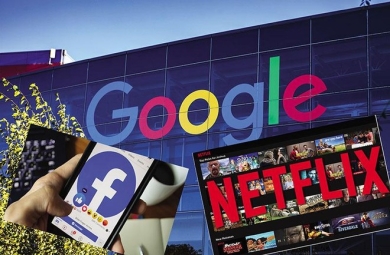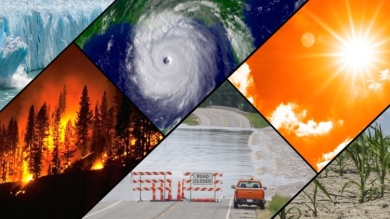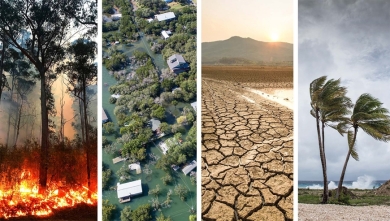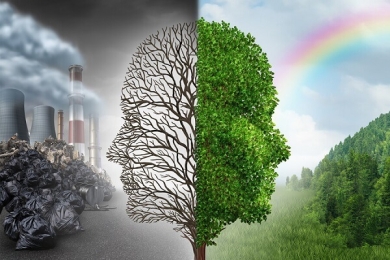China’s youthful urbanization changed the world. What will happen as the country ages and slows down?

Kim Sanho for Noema Magazine
“When the Grand course was pursued, a public and common spirit ruled all under the sky; they chose men of talents, virtue and ability; their words were sincere, and what they cultivated was harmony.”
— The “Book of Rites,” a core text of Confucianism.
TOKYO — Once upon a time, Japan was as chaotic and fast-paced as boom-era China, the number-one source of foreign students at American universities, polluted, covering its earth with concrete to build infrastructure, with a real estate bubble fueled by debt.
Once upon a time, the Japanese imagined in its future gangs, crime, megacities and villains — just watch the 1988 anime movie “Akira,” a dystopian account of a biker gang set in an imagined 2019 “Neo-Tokyo” plagued by corruption and terrorism.
And then, the boom ended. Tokyo never became neo; instead, it has become one of the most affordable and livable major metropolises in the world.
Boom-era Japanese imagined a future that was the present, but more so. Everyone does this; our imagination of what will come is a mirror of our attitudes about today. But the future that “Akira” imagined didn’t come to pass, and the predictions that people make about America or China’s future today might seem as distant from reality as a post-apocalyptic Neo-Tokyo does from the actual Tokyo of today.
In the years since Akira’s release, Japan experienced “lost decades” where its economy suffered or “stagnated,” but its culture and environment remained attractive. This suggests, perhaps, that economic growth and well-being are not always linked.
When you go there today, it’s not hard to find certain areas that are positively magical, where artisans and craftsmen follow self-directed trajectories and occupy lush and tranquil spaces, like an American architect who co-directs the Red Dot School on a rural island, population 650. In general, it’s a stable place with nice infrastructure and a low cost of living — a great place for people who want to spend calm years pursuing individual passions that might not make them rich. Indeed, a cottage industry of economists advocating “degrowth” lives in Tokyo. The culture reveres high-quality objects — old hotels and restaurants, vintage shops, nice cars. And creatives coexist with an endless grey sprawl, the legacy of the boom that built the place up.
Economists such as George Magnus and investors like Ray Dalio worry that China might experience “Japanification,” or an end to frantic urbanization that resolves to a more sedate pace. The Chinese economist Justin Yifu Lin told me that Japanification is impossible, saying China’s market size, control over its own currency and technological development will ward off Japanification like a vampire. But Japan is a terrific place. As the joke goes, there are four levels of development: Developed, underdeveloped, Argentina (undevelopable) and Japan (developed to a level unattainable elsewhere). What about Japan’s fate frightens these people so much?
Over several days of travel across Japan earlier this year, I tried to understand why becoming more like Japan would be a bad thing for China. Strolling through Tokyo after 30 years of stagnation, one can only say that China would be lucky to have such misfortune. “By 2035,” Chinese planners say, “China will have basically achieved socialist modernization.” (A lot rides on that “basically.”) Maybe it would be safe to say that Japan has done this already.
The Chinese tourists I met at the train station in Onomichi, a small town on the Seto Inland Sea, loved the quiet, the greenery, the cleanliness. China could never be like this, they laughed. Japan, I realized, is the sort of stasis that many urban Chinese yearn for.
“Strolling through Tokyo after 30 years of stagnation, one can only say that China would be lucky to have the misfortune of ‘Japanification.’”
Slowing Down
“… the people
Had forfeited the confidence of the government
And could win it back only
By redoubled efforts. Would it not be easier
In that case for the government
To dissolve the people
And elect another?”
― Bertolt Brecht, “The Solution,” 1959
During the boom years, people in China and foreign observers assumed that the future would be an extension of the present: a nation in the throes of a transformative passion, growing all the time. Even within the past couple years, economists have been predicting that China’s GDP would exceed America’s in absolute terms by 2030.
Today, it’s become apparent that for better or worse, China’s lightning-fast development has been replaced by government slogans like “high-quality development” powered by “new productive forces” as the country becomes an “olive-shaped economy” — no sharp bottoms or tops — experiencing “common prosperity.” All of these amount to explanations by the government that the fast-paced growth era is over, telegraphing to the population that there are new priorities now — something’s happening, even if your own life feels the same.
Behind this abrupt shift is a calculated decision by the government that the bones of modern China are in place. The plan for the next decade is to build soft infrastructures like education and healthcare, with the invisible guidance of new technologies driven by data to rationalize everything and make life smoother — like muscle tissues enabling structure to gain power.
To the extent that China is a controlled experiment, the government’s intentions are clear. If China’s move from a low-income society to a medium-income one was driven by urbanization and a massive change in human profiles and industries such as housing construction, its move to a high-income country will be driven by science and technology. In the next generation, GDP per capita is supposed to double, with the result that China overall will be equal to an unexceptional European economy, like Portugal or Slovakia today. Some regions, like the ones near Shanghai or Shenzhen, will be level with France or New Zealand. In turn, the poorer regions will be on par with Malaysia or Serbia.
“The Chinese tourists I met loved the quiet, the greenery, the cleanliness. China could never be like this, they laughed.”
Chinese government plans, far from being mysterious, go into mind-numbing levels of detail on these topics: “Key core technologies will achieve major breakthroughs and China will be among the forefront of innovative countries” by “adhering to innovation-driven development” and “aiming at cutting-edge fields such as artificial intelligence, quantum information, integrated circuits, life and health, brain science, biological breeding, aerospace technology, deep earth and deep sea.” To a certain extent, the proliferation of plans are a symptom of anxiety, like trying to budget spending for groceries.
The first draft of modern China has been written. The cities have been built — home-ownership rates are above 90%. The next decade will apparently be full of well-intentioned tinkering: improving schools and healthcare systems, wind energy here, solar there, crops upstairs, hydropower downstairs.
But just as the cities are “complete,” the population is as well: China’s population may have peaked, as Japan’s did more than a decade ago. Like Japan, China will likely be facing population decline and a top-heavy society. Advances in life expectancy mean that the elderly, who start retiring in their 50s, might live into their 80s. Some won’t retire and will frustrate younger people wanting to climb the career ladder, but others will, supported by pensions paid mostly by the young. It seems to me that the median experience of “Chineseness,” once the vigorous chaos of a society transforming rapidly, will increasingly be the tranquility of an elderly society living in provincial cities, crossing days off the calendar.
Getting Older
“Slowly, human faces passed before me in endless procession … century after century lined up before me, till the features, bit by bit, became more familiar.”
— Gustav Meyrink, “The Golem,” 1914
China’s birthrate has become a national crisis, part of a global phenomenon whereby middle-class urbanites typically have fewer children than rural people do. For China, this is particularly acute because a huge proportion of peasants became urbanites over a very short period.
In Japan today, the total number of humans is millions less than it was in 2008. Last year, China’s population dropped by 2 million and could fall from 1.4 to 1.3 billion by 2050, but before that, a world with more elderly people than young ones will come. In some ways, it is already here.
Societies of the elderly are different than societies of the young. In parts of the Arab world, the “hayateen,” or young men who lean against walls because they have nothing else to do, are cited as a reason for unrest and instability. But a society without many young people can be quiet and boring.
The streets of Shanghai, even today, are quieter than they are in New York; the elderly Shanghainese don’t move to Florida, and due to complicated real estate laws, it’s cost-free for many of them to remain in their downtown homes of this economic capital. Imagine a city where more than a third of the population are retirees, whose activities might involve going to buy vegetables, taking a stroll in the park, watching TV or playing mahjong with their neighbors. Some of them are always confined to their homes, so a service class of nurses have popped up to help them bathe, cook and manage daily life.
“Japan, I realized, is the sort of stasis that many urban Chinese yearn for.”
Unless something big changes, Chinese cities are likely, in the future, to feel calm and sedate, a haven for people who, if they don’t just stay home all the time, enjoy sitting on park benches, gazing into the distance.
The elderly in any country tend to be conservative and stability-oriented. Not in the sense of being attached to a particular set of politics, just in the sense that they don’t want new things — they want to preserve old things, their possessions and memories. This is true for Japan today — a very conservative society frustrates some young people.
Chinese cities have developed much more rapidly than rural regions, creating a sort of time-warp effect where the elderly might have more in common with their nurse from the countryside than with their own children. In our house, that’s certainly how it works. My mother-in-law likes to eat Chinese comfort food, heavy on carbs and pork, with the nanny; my wife prefers salad. In countries like the U.S. today, where the 65+ age group is 17% of the population, young people complain about the monopoly on political power held by the elderly. But what if retired people were to comprise the single biggest block of the population?
It seems reasonable that they will remain in power. The personality and culture of a society dominated by the elderly will probably be judgmental and persnickety but disinclined to confrontation. More likely to nurse old grudges than to take risks. Some American politicians no matter their party affiliation want us to fear a future in which China’s influence and power grows, a prospect they vow to prevent. “If you want a picture of the future,” George Orwell wrote in “1984,” “imagine a boot stamping on a human face — forever.” But it seems to me instead that China in 2035 will be more like an aging relative, increasingly lost in memories and fantasies and complaining that you don’t take them as seriously as they take themselves.
Automating
“It is imperative to remember that our citizens are first producers and only second consumers.”
—Robert Lighthizer
Ultimately, we may view China as making an entrance on the historical stage only to emit a great deal of carbon before providing the technologies of the green revolution and then slowly taking a rest in one of the seats off-stage. But that’s not certain. China’s government is planning, and seems to be implementing, a manufacturing-heavy strategy even as the demography that powers Chinese factories slowly evaporates. Automation and industrial applications of AI, leaders hope, will make China’s manufacturing sector increasingly manage itself.
China might not have invented solar panels, electric vehicles or QR codes, but based on the degree of uptake, they might as well have. The innovations that brought the cost of Chinese EVs down to less than $10,000 a piece were born in its endlessly competing factories, which are manipulated by the government’s levers of subsidy and regulation.
China’s high-speed rail system uses AI to keep track of what trains are going where and if there are weather or other delays. Intelligent power grids can work around cloudy or calm weather, shuttling power to places where it is needed. So-called “lights-off factories” where not a single human works, like Foxconn’s plant in Shenzhen, may never be common, but the tendency for Chinese workers to become less numerous and better educated is dovetailing with automation, robotics and straightforward applications of AI.
China may continue to achieve around 5% economic growth in the coming decade without impacting Chinese consumers much. So a high-functioning, AI-driven manufacturing ecosystem could exist in a country that feels like it is stagnating.
“The personality and culture of a society dominated by the elderly will probably be judgmental and persnickety but disinclined to confrontation.”
Meanwhile, technological breakthroughs will proceed. In this sense, China’s population and China’s economy will be decoupled. We could have an elite class of technicians with a higher quality of life than almost anywhere in the world coexisting with crowds of elderly people in public parks doing tai-chi or dancing or singing to themselves.
Those elderly, monitored by a healthcare system that generates endless data about how the aging process works, will be part of history’s largest longitudinal experiment in medicine. In 2023, China exceeded the U.S. in the number of clinical trials for new medicines. With 4.6 million new diagnoses of cancer per year and 3 million deaths, a Chinese society increasingly skewed toward the needs of the elderly will need to allocate more and more of its resources to biomedical research and healthcare.
China’s biotech industry has historically underperformed, most notably during the Covid pandemic. But the sheer quantities of data and patients suffering from diseases like cancer make it increasingly likely that that may not be true much longer. By 2035, China will likely have a Huawei of biotech, if not several. At the Shanghai labs of Insilico Medicine, a U.S.-headquartered medical research startup, American breakthrough technologies are applied to Chinese problems.
Between the new tools offered by AI, the vast resources of Chinese data on aging and health, and the scale of the Chinese market, the table is set for a breakthrough in Chinese healthcare which will, as with Chinese green technologies, be able to go global.
Japan’s Degrowth Metaphor
“Earth may be alive: not as the ancients saw her — a sentient Goddess with a purpose and foresight — but alive like a tree.”
—Richard Lovelock
In Japan, I visited islands whose populations had been six times larger as recently as 1990, and in Onomichi, districts where beautiful old houses were there for the taking by anyone who wanted to fix them up. My friend Sam Holden does exactly that. He and a team of friends are experimenting with communal living in a nice place that they got for free right next to a train station.
Across most of the rich world, the need to pay rent and make revenue creates generic cities; a Manhattan given over to Duane Reades, a London of Pret-a-Mangers. If Tokyo is well known for quirky boutiques and restaurants that specialize in complicated labors of love, that’s partly because the people who live there simply aren’t as worried about making rent. And outside of Tokyo, in towns like sun-dappled Onomichi, creative communities can live and work independently of the need to pay a landlord — which is, all by itself, the most substantial way that the system we call “capitalism” guides our activities.
What would you do if money was no object? For Sam and his friends, it isn’t, and their answer is to spend life together cooking, building and learning.
Passing through Hiroshima on my way home to Shanghai, I caught up with the anthropologist Nishi Makoto, who spent years conducting interviews with nurses in a slum area in Osaka once called Kamagasaki. The area is gentrifying but Kamagasaki still exists, inhabited mainly by elderly men living on welfare. Many were construction workers when they were young; orphaned by the war, they joined construction teams in which the rights and privileges that Japanese came to take for granted were nonexistent. Now, they’re alone; never having formed families, they have nobody to tell their stories to except for the nurses that the welfare state provides.
“The tendency for Chinese workers to become less numerous and better educated is dovetailing with automation, robotics and straightforward applications of AI.”
I asked Makoto about Japan’s boom. He didn’t talk about finance much, although he admitted that he had decided not to buy an apartment back in the 80s, which might have been a mistake. There had been a sense that Japan was invincible — until it wasn’t. The Kobe earthquake and the toppled concrete expressways, the Aum Shinrikyo attacks on the Tokyo subway — these things made him understand that times had changed, and not just because of real estate prices.
Summer becomes autumn, first subtly and then suddenly. When Japan’s boom was over, the common mood changed from frantic opportunism and giddiness to inward-looking hesitation. After 30 some years of low growth and declining birthrates, a nation of people have made their everyday lives, relationships and hobbies into one of the most pleasant places on the planet. Japanese cement manufacturers might not think this is a good thing, but here is a nation where economic growth or material gains are not the primary focus.
Of course, Japan is different from China in many ways. One of the most obvious ones is that in Japan, urbanization is more complete. More than 90% of Japanese live in urbanized conditions — not necessarily Tokyo or even Hiroshima, but still places with modern logistics, transportation networks, schools and hospitals. In China, that figure is in the mid-60s.
The parts of China that are “finished,” like Shanghai or Shenzhen, might experience something like Japan’s serenity, but the hundreds of millions of people who still haven’t been plugged in to the global economy will either be urbanized by legal fiat, state-provided housing or digitalized technologies. The number of humans in China who don’t have access to urban incomes (because “hukou,” or residential registration, ties people to certain areas) is significantly larger than the entire population of Japan. The government expects 75% urbanization by 2035: 140 million new urbanites. Most won’t go to “first-tier” cities but to large provincial cities like Dalian, which are newly vibrant and developed.
Springtime In A Small City
“In societies where modern conditions of production prevail, all of life presents itself as an immense accumulation of spectacles. Everything that was directly lived has moved away into a representation.”
— Guy Debord, “The Society of the Spectacle,” 1967
Bo Xilai, the one-time rival of President Xi Jinping, is still revered in Dalian, where he used to be the mayor. But in some quarters, people complain that he shut down the old factories during the mid-90s when Liaoning Province went from socialist powerhouse to rustbelt backwater. During that time, reform of the state-owned enterprises led to social malaise, widespread unemployment and conditions not unlike those in the former Soviet Union.
Today, Xi’s government is steering toward an economy that is heavily planned, even if it uses market mechanisms, combining elements of the centralized industrial economy with a marketized consumer one. But it’s difficult to see how consumerism can coexist with socialist collective life.
Bo, for his part, is also remembered for supporting tourism, creating festivals for clothing and beer, and luring the World Economic Forum’s Davos conference. He supported sports and moved the factories out of town; in the newly clean city center, he began the revitalization of historical areas, redeveloped an old Japanese-built factory area near the train station, built Xinghai Square — Asia’s biggest, though rather ugly, urban public space. An old refrigerator factory was renamed and relocated to the free-trade zone and the original became a tourist attraction filled with startup spaces and trendy restaurants.
Dalian, like so many second- and third-tier Chinese cities, is a nice place to visit when the weather is good: You can pick organic cherries, eat fantastic seafood, hike through scrubby coastal pine forests, stroll through a forgotten modernist metropolis. But the community that formed around tension and struggle — industrialization, colonization, socialism — is now slowly drifting into a variety of individual experiences, mostly of consumption.
Above all, it is Dalian’s own identity that is being consumed. Working is something that we tend to do together, that binds us together in a grand project, misguided or not. But consuming is usually something that we do by ourselves, even if we do it in crowded places.
“The community that formed around tension and struggle — industrialization, colonization, socialism — is now slowly drifting into a variety of individual experiences, mostly of consumption.”
Since the pandemic, Chinese society has become newly inward-looking. Increasingly, Chinese students don’t study overseas and Chinese tourists have been visiting domestic tourist destinations like Harbin in Heilongjiang or Tianshui in Gansu. The conspiracy theorist in me suspected that, in line with the government’s plan to redistribute money from the wealthy coast to poorer areas without building a welfare state, the state was pushing Chinese with money to spend it in the poorer parts of China.
But as poorer and more exotic Chinese regions showcase their particularity and uniqueness for tourists from richer places, the discrepancy between historical progress and what remains of China’s cultural history, whether of rural tradition or urban socialism, becomes commodified. The people from rich, generic cities desire the knotty, complicated country that they left behind. The one they live in now — the anonymous land of the internet, which summons food, images and products of all varieties on demand — is lonely.
During the pandemic years, I had a nightmare vision of lockdown as China’s future, with takeout food delivered by drones or anonymized peons to residents of modernist tower blocks who spent all day on phone apps like Douyin (the Chinese version of TikTok). But if the Davos set who’ve made Dalian their Asian home can plausibly be accused of being a bunch of rich guys, the CCP can’t. Rather, they remember the factories and the mines and don’t want their kids to go through that, even if they do hope the kids will value the struggles made on their behalf.
In April, I went down to see a friend in Ningbo, a busy port city in Zhejiang Province, and I was reminded again of Japan. The train sped through green, rain-sodden fields; cement buildings, some topped with cranes, appeared periodically, seeming to have come to a peaceful coexistence with the countryside. Green, grey, quiet; green, grey quiet. The landscape outside for those two hours on the train looked like an undulating green suburb that never ended, like in Xu Cu’s 1947 poem “Jiangnan Whirling”: “火车在雨下飞奔 … 模糊了窗外景色” (“The train speeds underneath the rainstorm … the view outside the windows is blurred”).
Today, China is going on a journey into its own interior, recuperating its past, building out the heartland, aging, reflecting on memories. Train windows, wrote Xu, make the best frames; the landscape is in motion, but we ourselves aren’t, and we can lull ourselves into complacency as we watch the world speeding by.
By Jacob Dreyer - NoemaMag









